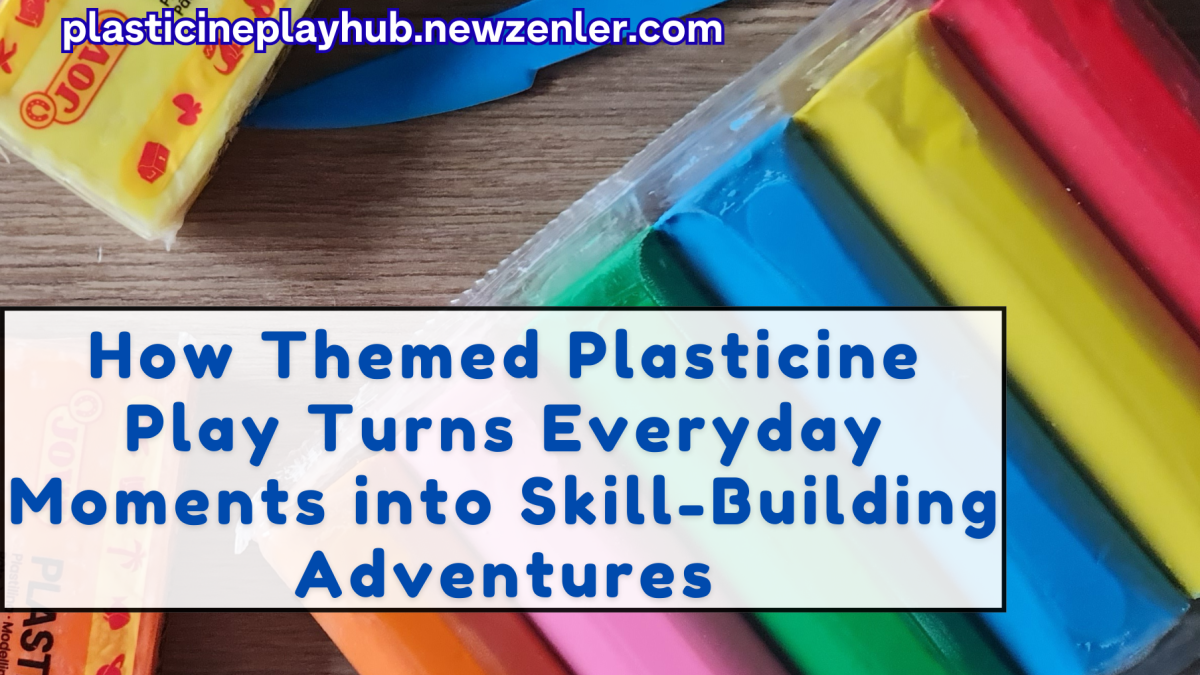How Themed Plasticine Play Turns Everyday Moments into Skill-Building Adventures

Transform everyday moments into playful learning adventures with themed plasticine projects that develop creativity, problem-solving, and motor skills
Picture this: it’s a rainy afternoon, and instead of restless pacing or endless screen time, your child is happily building a miniature farm out of plasticine. Tiny animals, fences, a winding river — all taking shape under their small but growing hands.
What looks like “just play” is actually a goldmine of developmental benefits — from fine motor skills to problem-solving, focus, and creativity.
The best part? You don’t need to invent a whole new learning program to make it happen. You can turn everyday themes into targeted, skill-building plasticine activities.
The Lesson: Play That’s More Than Fun
By the time we’ve reached this stage in our journey, we’ve explored:
- How to strengthen fine motor control (Blog 1)
- How play can sharpen focus (Blog 2)
- How bilateral coordination feeds school success (Blog 3)
- And how just 5 minutes of play can boost writing readiness (Blog 4)
Now, we shift to integration — combining all these skills into themed, creative play that your child will ask for.
This isn’t about cramming “lessons” into their free time. It’s about using play to connect the dots.
Why Themed Play Works
Themes give structure without taking away creativity. For example:
- Weather theme: shaping sun rays, clouds, raindrops, and wind swirls
- Ocean theme: creating fish, shells, and waves
- Community helpers theme: making tiny tools, uniforms, or vehicles
Here’s why this approach works so well:
- Repetition without boredom – tracing the same shapes in different contexts builds mastery without the “not this again” reaction.
- Contextual learning – linking shapes and patterns to real-world objects makes them more memorable.
- Open-ended challenge – kids can expand the scene however they like, building creativity alongside motor skills.
From 5 Minutes to Creative Flow
In Blog 4, we explored how a short, targeted daily routine builds writing readiness. When you add a theme, something magical happens: five minutes often turns into ten, twenty, or more — not because you asked for it, but because they’re engaged.
That’s the power of intrinsic motivation.
How Themed Plasticine Play Builds Multiple Skills at Once
Here’s what’s really going on beneath those colorful creations:
1. Fine Motor Precision
Rolling thin lines for rain or sun rays demands careful control — the same control they’ll need for letter strokes.
2. Visual-Spatial Awareness
Placing objects in a scene strengthens planning skills: “Where will the river go? How big should the house be?”
3. Bilateral Coordination
One hand steadies while the other shapes or presses details into place — exactly the teamwork needed for writing.
4. Problem-Solving & Flexibility
If the fence is too short, they adapt. If the boat tips over, they rebuild. They learn persistence without it feeling like a lecture.
5. Storytelling Skills
As they create, kids naturally narrate: “This is the farmer, and here’s his dog.” That’s early composition practice — storytelling at its most tactile.
A Real-Life Example
When Ethan, age 6, struggled with pencil control, his parents tried themed plasticine play as a “low-pressure” supplement to handwriting practice.
They started with a space theme:
- Rolling long “rocket boosters”
- Shaping small “stars” by pinching tiny pieces
- Creating a “moon” with craters pressed by a pencil eraser (bonus tool practice)
Not only did Ethan’s finger strength improve, but his focus during school tasks increased. His teacher noted he stayed on task longer and took more pride in his work.
The secret wasn’t more worksheets — it was structured, engaging play.
How to Create Your Own Themed Plasticine Adventures
You don’t need fancy supplies — just plasticine and a theme. Here’s a simple framework:
- Choose a Theme Your Child Loves
Dinosaurs, farm life, weather, vehicles — anything that sparks excitement. - Break the Theme into Shapes
Example: “Rainy day” becomes raindrops, puddles, clouds, umbrellas. - Add a Challenge
Time them to make 10 raindrops, or see if they can roll a snake longer than their arm. - Finish with a Story
Use the creations to act out a short scene. This ties motor skills to language development.
Why This Beats Passive Play
Screens can entertain, but they don’t build hands-on skills. Themed plasticine play:
- Keeps hands active
- Engages multiple senses
- Encourages independent creativity
- Builds stamina for more structured tasks like writing or drawing
It’s active learning disguised as fun.
The Role of the Plasticine Play Weather Series
If you want a ready-made starting point, the Plasticine Play Weather Series offers guided worksheets and prompts that blend creativity with targeted motor practice.
Each sheet introduces a new challenge — from tracing lightning bolts to rolling tiny snowflakes — that strengthens writing muscles while immersing kids in playful storytelling.
👉 Have a sneak peek at the Weather Series and see how themed plasticine play can turn your child’s everyday moments into a source of growth.
Making It Part of Your Lifestyle
The beauty of themed play is that it doesn’t need to be a “special event.” You can:
- Add a 5-minute session before dinner prep
- Create quick weekend challenges
- Use it as a calming transition after school
Once it’s part of the rhythm of your home, you’ll notice the ripple effects: more creativity, better focus, stronger hands.
What Comes Next
Themed play isn’t the final step — it’s a springboard. When your child has built fine motor control, focus, coordination, and creativity through plasticine, they’re ready for more complex challenges.
That’s exactly what we’ll explore in the next post: From Squishy Fun to School-Ready Skills: How Plasticine Play Transforms Learning — where we connect all the dots and show how these small, playful steps add up to big, lasting changes in your child’s development.
Categories: : fine motor development, hand strenght, handwriting skills, pre writing, school readiness, tactile development
 Tamara Mamedova
Tamara Mamedova 